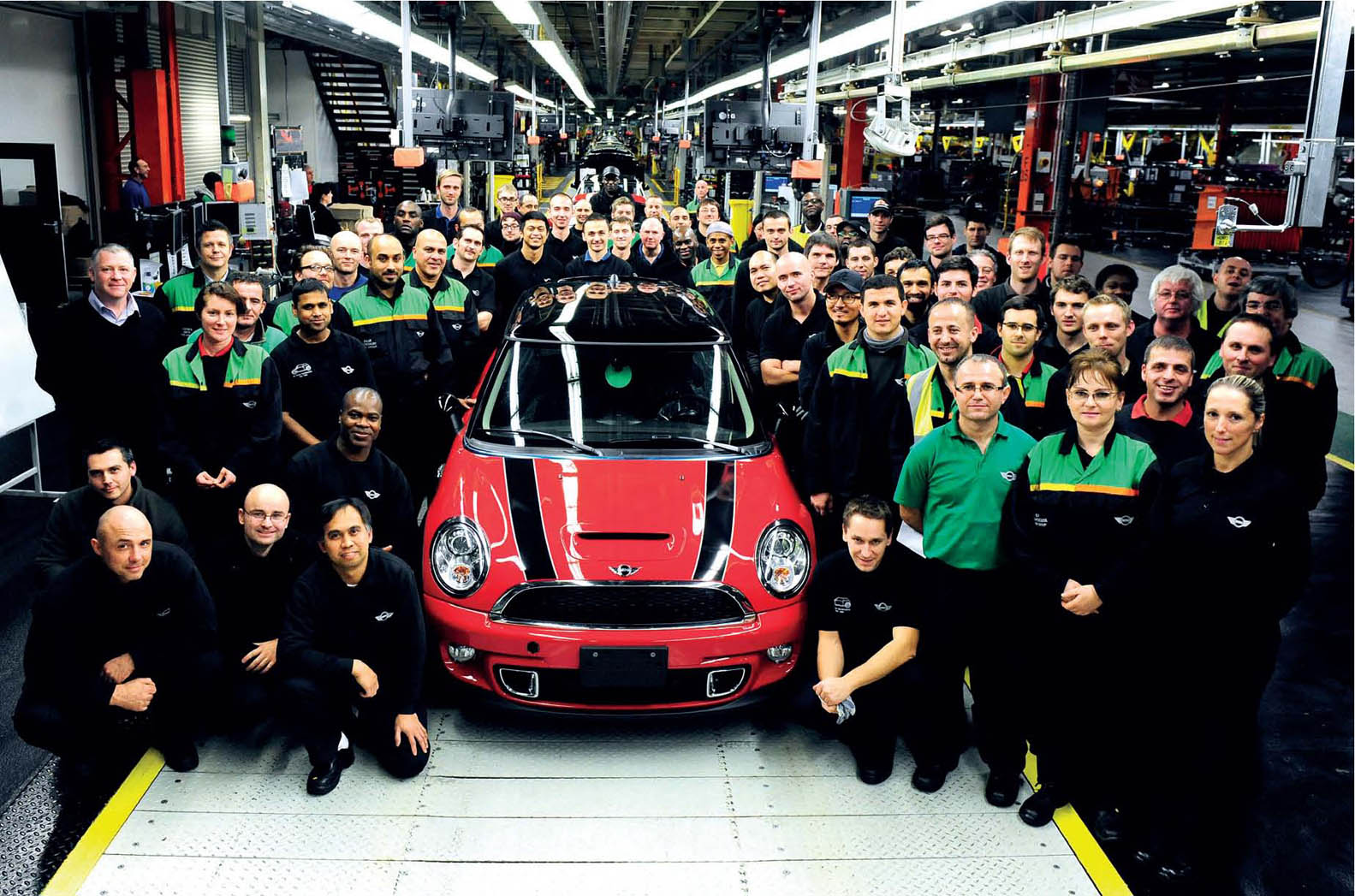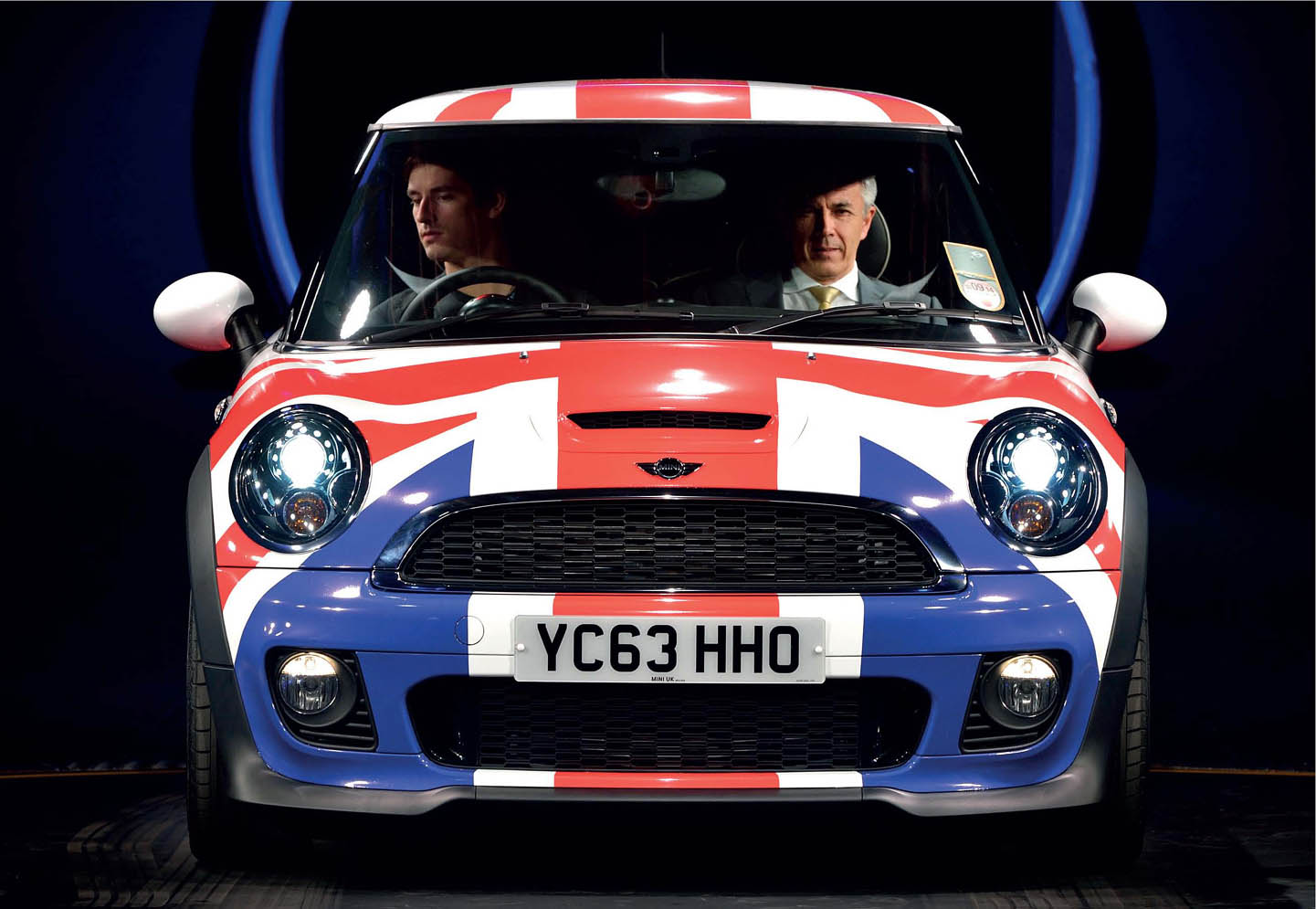

THE THIRD GENERATION MINI: A NEW BEGINNING WITH F56
In November 2013, after 1,041,412 examples had been built, the very last R56 MINI rolled off the production line at Plant Oxford. Since the launch of the modern MINI in 2001, more than 2.4 million models had been produced by the dedicated engineers at Cowley, and in the space of ten years, MINI had evolved into a second generation car, had seen the introduction of turbochargers from superchargers for the Cooper S and JCW 4-cylinder MINI variants, and welcomed MINIMALISM technologies for improved fuel economy and performance. As well as that, MINI also accounted for 14 per cent of all UK vehicle exports in 2012, confirming its position as one of the leading marques in the automotive industry. But this wasn’t a sad occasion, it was very much a joyous one, because production of the all-new F56 MINI was already underway at Cowley, marking a new era for the MINI brand.
In 2013 BMW MINI unveiled the next generation model of its iconic hatchback, when the German-owned manufacturer took its dividing design to yet another level. The launch of the next generation MINI – codenamed F56 – was officially made at MINI Plant Oxford on 18 November – the day that Sir Alec Issigonis would have turned 107. Although it still features a number of unmistakable brand characteristics, the original BMW model has undergone a full redesign. The exterior has been noticeably reshaped, with both the front and rear end benefiting from prominent facelifts, while the interior now boasts a number of technical upgrades. At the launch of the new F56 MINI at Plant Oxford, Andres Warming, head of design at MINI UK, said: ‘This has possibly been the most emotional and rewarding MINI we’ve built yet. Achieving the right balance of heritage and innovation has been a significant part in producing the next generation Mini hatchback.’

The MINI family had become the most beloved hatchback across the world. NEWSPRESS
BMW MINI F56 Cooper 1.53dr(2015)
Layout and chassis
Three-door, four-seat hatchback with steel body
Chassis: Steel UKL platform
Transmission: M6
Engine Platform: B38A15MO
No. of doors: 3
No. of seats: 4
Engine
Type: 1.5-litre, in-line
No. of cylinders: 3
Valves: 12
No. of valves per cylinder: 4
Compression ratio: 11:1
Displacement: 1499cc
Stroke/Bore: 94.6/82mm
Power output: 134bhp
Max. torque: 220Nm
Engine control: MEVD 17.2.3
Charging type: TwinPower Turbo
Injection type: High precision direct injection
Transmission
Type: 6MTT 220
1st 3.615
2nd 1.952
3rd 1.241
4th 0.969
5th 0.806
6th 0.683
Suspension and steering
Suspension front: MacPherson Struts, adjustable dampers, anti-roll bar
Suspension rear: Multi-link, anti-roll bar
Steering type: Rack and pinion
Steering ratio: 14.2:1
Tyres
Tyre size front: 175/65 R15 84 H
Tyre size rear: 175/65 R15 84 H
Wheel size front: 5.5 J × 15 alloys
Wheel size rear: 5.5 J × 15 alloys
Brakes
Brake front: Ventilated discs
Brake rear: Solid discs
Dimensions
Vehicle length: 3,821mm (150in)
Vehicle width: 1,727mm (68in)
Vehicle height: 1,414mm (56in)
Wheelbase: 2,495mm (98in)
Turning circle: 10.8m (35ft)
Overhang front: 749mm (29in)
Overhang rear: 577mm (23in)
Track front: 1,501mm (59in)
Track rear: 1,501mm (59in)
Luggage capacity: 211 – 731 litres (7.5–25.8cu ft)
Tank capacity: 40 litres (8.8gal)
Curb weight: 1,085/1,160kg (2,392/2,558lb)
Axle load ratio, rear: 37.9 per cent
Gross vehicle weight: 1,565kg (3,451lb)
Payload: 480kg(1,058lb)
Axle load limit front: 870kg (1,918lb)
Axle load limit rear: 755kg (1,665lb)
Performance
Top speed: 130mph (209km/h)
Acceleration 0–60mph: 7.9 seconds
Fuel consumption
Combined: 62.8mpg (4.5ltr/100km)
CO2 emissions: 105g/km
Warming explained that while the new MINI is a completely new car, the design team worked to build on the standard symbolic features, while introducing distinctive heritage elements we have yet to see on a modern MINI: ‘While the MINI is a completely new car, we’ve enhanced the existing elements to ensure the car remains 100 per cent MINI – so it resembles the classic Mini more than its predecessor. The new, larger grille is a perfect example of this – it’s clearly a MINI, but it is completely brand new.’
In fact the new MINI is visually different from every angle – the side panels now consist of curved lines, while the rear has also been given a full facelift to couple its new distinctive vertical (and framed) tail lights, which originate from the newest family member, the MINI Paceman. As Warming says: ‘The door handles and wing mirrors are still the same, but we’ve made them more accessible. The car has been lengthened slightly, it features significant curves and crease lines which give a sense of speed whilst standing still, and inside we have enabled driver interaction with the improved infotainment screen.’
One change that was bound to come as a shock to MINI drivers is that the speedo is no longer located centrally in the next generation’s interior, but has instead been positioned alongside the rev counter to form a cluster in front of the driver. Warming said of this: ‘The speedo, which is such a unique feature to MINI, has moved directly opposite the driver. Unlike before, the infotainment screen now enables driver interaction by displaying a number of visual features from a virtual rev counter to highlighting changes in drive modes or displaying the control of the in-car temperature gauge.’
It’s not just the styling elements that have been given a makeover: the new MINI Hatch also comes with the option of three brand new, TwinPower Turbo Technology Valvetronic petrol engines. Upgrading from the 1.6-litre unit, the 2014 range was powered by more powerful 3- and 4-cylinder engines. The Cooper and Cooper D downsized to more efficient 1.5-litre 3-cylinder petrol and diesel engines, while the powerful Cooper S runs a larger 2.0-litre 4-cylinder unit, which can produce up to 192bhp.
Chris Brownridge, brand director of MINI UK said: The next generation MINI is a completely new car. It features more efficient and more powerful drivetrains, and the in-car equipment Mini is offering in this segment is what you’d usually find in luxury premium cars. Every MINI has to be fun to drive and exciting to own, and the next generation model really reflects these values of ownership experience.’
The new generation MINI hit the road in 2014, with prices starting from £ 15,300 for the Cooper, £ 16,450 for the Cooper D, and £ 18,650 for the Cooper S.

MINI unveiled the next generation model of its iconic hatchback – F56 – on 18 November 2013, the day that Sir Alec Issigonis would have turned 107. NEWSPRESS